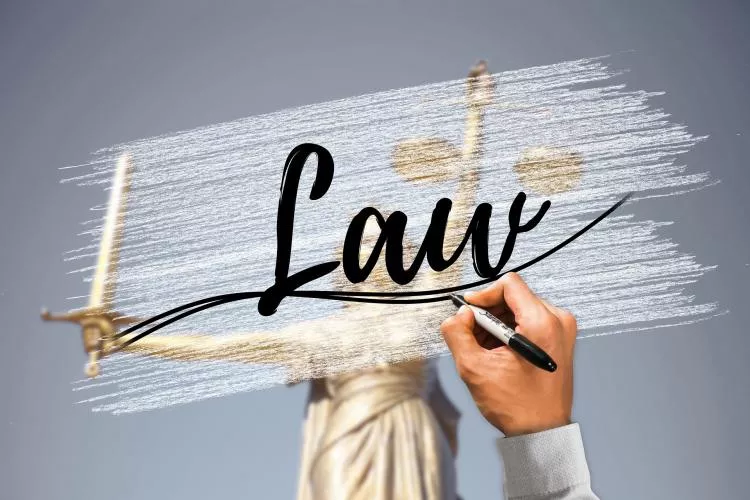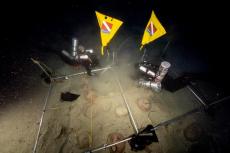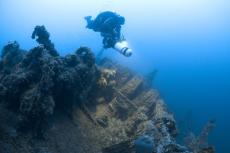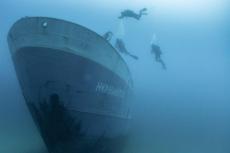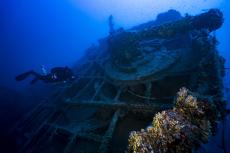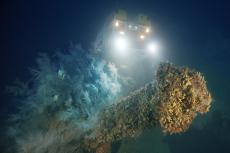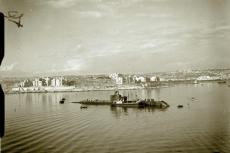Implications of Maltese Court Ruling on Diving Fatality
International dive community outraged at court ruling after a diver was found guilty of the involuntary homicide of his dive buddy.
On Friday 25 November, diver Arthur Castillo, 60, was found guilty of the involuntary homicide of his long-time dive buddy Christine Gauci who died following a dive in Mgarr ix-Xini, a bay on the southern coast of Gozo in January 2020. Ms Gauci was an Armed Forces of Malta member, diving instructor and technical diver.
The court handed Mr. Castillo a two-year jail term suspended for four years, pronouncing itself convinced that this case did not merit effective imprisonment. Castillo told Times of Malta he will be appealing the judgment but declined further comment.
The diving community has reacted with a mixture of disbelief, horror and outrage to the verdict which has been found to discourage buddy diving as nobody wants to be held responsible for the accidental death of their dive buddy.
Speaking to Times of Malta, Mark Busuttil, vice chair of the Professional Diving Schools Association, expressed his grave concern;
“This sentence is a horrible precedent. All the divers I spoke to after the news of the conviction said they were seriously considering going solo, which would be even more dangerous. The magistrate’s decision goes against the premise of buddy diving – which is a golden rule in our sport – to always dive in groups to look out for each other.”
Oh no, not again
Divers are also seriously concerned that the judgment will impact the tourist diving industry, an important niche for Malta. This is not the first such case either. In 2014, Briton Stephen Martin also found himself accused of involuntary manslaughter by the Maltese authorities who issued an international warrant for his arrest.

That case was, however, eventually dropped after the dive community kicked up a storm, politicians intervened and BSAC came to his aid but not until it had done immense damage to Malta's reputation as a dive destination.
While we fully appreciate that a judiciary should act completely independently and not be swayed by outside considerations such as, in this case, considering the impact on the nation's hospitality sector, and solely be concerned with upholding the law and dispensing justice, the case at hand calls into question whether the interpretation, administration or existing legal definition of culpability is indeed meaningful, let alone just.
It appears that the Maltese authorities have set a very very low bar for culpability
X-Ray Magazine legal counsel
Brief recap of the accident
Mr Castillo and Ms Gauci entered the water for a shore dive on Gozo. Ms Gauci was using twin-7 litre (200-300 bar*) cylinders with a 7-litre stage of 50%. Mr Castillo was using a CCR and had a bailout cylinder. Before they descended, Gauci seemed tired but insisted on going ahead with the dive anyway. Castillo helped her several times and suggested they turn back, according to his testimony.
During the dive, Ms Gauci appeared to be struggling with her buoyancy control, likely due to being underweighted and suffered a couple of uncontrolled ascents. As she was losing buoyancy underwater, he gave her some of his own weights, Mr Castillo testified, and also helped her to release air from her wing. But at one point, Ms Gauci made a rapid ascent to the surface but was not followed by Mr Castillo, who couldn’t keep up as they had a decompression overhead.
On surfacing, Mr Castillo spotted a diver on the beach who he and his group thought was Ms Gauci because of how they were dressed. However, after his group reached the beach to exit, it transpired it wasn’t their buddy. Ms Gauci was found dead shortly afterwards. Her main cylinders were empty, but her stage still had gas in it.
Paramedics administered first aid but she was pronounced dead at the scene. She was certified as having died of natural causes, namely seawater drowning and coronary artery atheroma.
A fuller account of the incident has been posted on divinginfo.mt
Key mistakes by the victim
The court found that several key mistakes were attributed to the deceased, Ms Gauci; It was alleged she was diving when tired after just finishing a 24-hour work shift – although it has later come to light that she was able to sleep during the shift. Furthermore, she was using a drysuit that was too large for her and she wasn’t trained to use such a suit. She had also replied in the affirmative when fellow divers asked her repeatedly if she wanted to continue with the dive or go back to shore.
Throughout the dive, various factors indicated that she had buoyancy problems and still the dive continued.

Judgment
When delivering judgment, the court stated that the prosecution had to prove a link between his conduct and her death.
Upon all evidence put forward, the court was convinced that the accused, Mr Castillo, had indeed been negligent. He made too many assumptions when it was clear that it was a difficult dive for the victim, observed the court, and he failed to make eye contact with her and check her air supply at a critical stage of the dive. Although Castillo did assist her as he was duty-bound to do most of the time, he failed in the final stage and wrongly assumed Ms Gauci was swimming back to shore after surfacing, the court stated.
This unfortunate incident could have easily been avoided had the accused shown greater caution and prudence, said Magistrate Grech who presided over the court.
Analysis
Article 225 of Maltese Law
The key law which was being considered in this case is Article 225 of Maltese Law, which states
"Anyone who, with a lack of thought, with carelessness, or with a lack of skill in his art or profession, or with a lack of observance of regulations, causes the death of someone, is liable when found guilty, the penalty of imprisonment for a period not exceeding four years or a fine not exceeding from eleven thousand six hundred and forty-six euros and eighty-seven cents (11,646.87).”
The proceeding also stated that four essential elements of criminal behaviour needed to be present:
(a) voluntary action or omission;
(b) harmful event or occurrence;
(c) causality between the action (or omission) and the harmful event or occurrence; and
(d) the foreseeability and exceptionally the foreseeability of this harmful event or occurrence.
Gareth Lock writes: (All the following sections are excerpts from his post on the human diver)
Looking at these in turn. Safety science has shown that while errors of omission (slips, lapse or mistakes) are more forgivable than errors of commission (violations), in all cases, the variability of human performance means that errors are normal, no matter how experienced or knowledgeable the individual is. Criminalising error does not help anyone, especially when it happens in a complex domain.
In terms of an event, (b) is a truism, something needs to happen for there to be a criminal act. At the same time, the failure (variability in performance) and subsequent learning occur in the actions preceding the adverse event, not the event itself. In this case, had everything been almost the same, but the diver had not died, then the same learning opportunity would be present, but there wouldn’t be the judicial interest. Whether those involved would have shared their story to generate community learning is questionable, but that is unlikely down to a lack of Just and Learning Cultures within the diving community.
“Foreseeability” is heavily influenced by hindsight. The power of this bias should not be discounted. Research has shown that even when subjects know that they will be subject to hindsight bias, they still fall foul of its effect and think that something would have been easier to spot by those involved than it was.
"The reasonable man"
The proceedings state:
"The amount of prudence or care which the law actually demands is that which is reasonable in the circumstances of the particular case. This obligation to use reasonable care is very commonly expressed by reference to the conduct of a 'reasonable man' or of an 'ordinarily prudent man', meaning thereby a reasonable prudent man: "negligence", it has been said, "is the omitting to do something that a reasonable man would do, or the doing something that a reasonable man would not do" ... What amounts to reasonable care depends entirely on the circumstances of the particular case as known to the person (Carrara, Programma, § 87n.)”
Historical law shows that while there is a ‘fictional character’ - the ‘reasonable man’ - safety science and behavioural economics show there can be no such thing. This is for a number of reasons: individuals behave differently to groups of individuals, individuals behave locally rationally in real-time but in hindsight appear irrational, and behavioural economics shapes risk and reward.
The diving community is not representative of the wider population when it comes to perceived and acceptable risks - are they 'prudent'?
Therefore, what is ‘reasonable’ considering a proportion of social media responses from instructors/technical divers indicate they would have done the same as the surviving diver? Is the reliance on this premise still valid in such cases?
Liability outside Malta
The premise behind Article 225 is not unique to Malta. For example, in the US, something similar is codified in the restatement of torts.
“42. Duty based on Undertaking
An actor who undertakes to render service to another that the actor knows or should know reduce the risk of physical harm to the other has a duty of reasonable care to the other in conducting the undertaking if (a) The failure to exercise such care increases the risk of harm beyond that which existed the undertaking or (b) The person to whom the services are rendered or another relies on the actor’s exercising reasonable care in the undertaking.”
This article from 2002, shows that litigation (not criminal action) has been successful in the past with a buddy pair and highlights a duty of care between buddy/team members when it comes to civil action. It is not clear if there has been any criminal case law in the US relating to this.
It is believed France has a very strict protocol regarding responsibility/accountability for accidents and incidents in sports/adventure sports.
The British Sub-Aqua Club, the National Governing Body in the UK, has their Safe Diving Guide, which covers many more aspects of Safe Diving Practices in an 80-page document. The BSAC also has a page concerning Duty of Care and Welfare.
Breach of the SDP document would mean that the individual divers would not be covered by BSAC or disciplinary action might be needed. The British Mountaineering Council (BMC) have produced these open Risk, Responsibility, Duty of Care and Liability Club Guidelines which are only six pages and cover key factors the diving community should be aware of.
Regulatory Bodies and Associations
Recreational Buddy Diving
“The whole scope of the diving buddy system is for the two divers to be close to each other to assist each other in any untoward event during the dive.“ - expert witness. At the recreational level, all agencies teach buddy diving. This is a loose concept of a team where there is mutual support between two (or more) divers in the event of a problem but this mutual support is not the “whole scope of the diving buddy system.” as there are more factors involved including cross-checking, shared tasks, and reduced cognitive loading.
At the recreational level, there is no planned decompression or substantial physical overhead (wreck penetration is allowed - to limits), so an ascent to the surface should be possible in the event of an out-of-gas situation. In the event of buddy separation, divers are (normally) taught that they should search for their buddy for one minute at depth, and then ascend at a safe rate, search on the surface and raise the alarm.
The problem is that this isn’t what happens in the real world with many examples of divers staying at depth and completing their dives and so there is a difference between what is expected to happen (‘Work as Imagined’) and what really happens (‘Work as Done’).
Often there is an assumption made about what will happen in the event of separation but from the author’s experience to be the norm to cover it as part of a dive brief, especially if divers are used to diving together, which was the case for these two.
Technical Diving - Team Diving/Self-Sufficiency
At the technical diving level, the concept of self-sufficiency and teamwork are brought to the fore. Every diver should be capable of making a solo ascent, completing the decompression as required, and surfacing safely.
Notwithstanding this, some agencies strongly promote the value of effective teamwork in trapping errors or problems before they become an issue and helping to mitigate them if and when they do manifest themselves. More effective problem identification and solving processes are needed because the diver cannot immediately surface due to either a physical or decompression overhead.
In this case, the dive was undertaken with a qualified technical diver using a rebreather and a diver using a technical OC configuration (twinset and stage). The twinset was configured as 200- or 300-bar twin 7s (there is conflicting information in the judgement).
So while a decompression overhead was possible with a maximum depth of 30m, while still maintaining a useful minimum gas to ascend as a pair (if that was the plan), the decompression obligation would have been minimal.
Without knowing the gas consumption rate of the deceased diver, it is not possible to determine a likely decompression obligation (based on their bottom time). The no-decompression limit for 28m on air is approximately 23 mins (if straight down and staying at depth).
No profile was provided in the proceedings.
The following statement from the Professional Diving Schools Association (PDSA) made on 24 November on Facebook brings up some interesting points regarding ‘Work as Imagined’ and ‘Work as Done’.
“Technical divers are taught to be 100% self-reliant. They are not taught on the buddy system, but are obliged to plan every dive in detail, try to foresee all eventualities and plan for these without relying on help from anyone else…The type of equipment used and the fact that this was a dive with decompression does suggest this was a technical dive…Ms Gauci and her buddy both held technical diving qualifications. They would have therefore been trained to be 100% self-reliant.”
Red flags
The use of absolutes e.g., '100%...' & 'every dive' should be considered a red flag when comparing an event or action to reality because there are always exceptions. Just because someone holds a certification, it does not mean that they are competent in their approach - there are plenty of examples of this incident reports and on social media. Conversely, someone can be competent without a certification.
In the proceedings, the qualifications of the deceased are not described other than they were going to be completing their MOD 1 CCR course in the coming months and that they didn’t have a drysuit certification. So it isn’t clear what dive training they had outside of the Armed Forces of Malta.
While it is not a legal requirement in many locations to hold a drysuit certification to dive (you’d normally need one to rent a drysuit), it is certainly a good idea so that failure modes can be learned and mitigations practised: this includes knowing what to do if an inflator valve is leaking as appears in this case. The proceedings do not describe the dive profile, so it is not clear whether this was a (planned) decompression dive.
However, if the CCR diver had two mins of decompression to do and they were using a set-point between 0.7 and 1.3, then as the deceased was using 21% as their back gas, it was likely there was a decompression obligation for the deceased.
There was nothing in the judgement that described the deceased’s dive profile and what their decompression obligation was.


